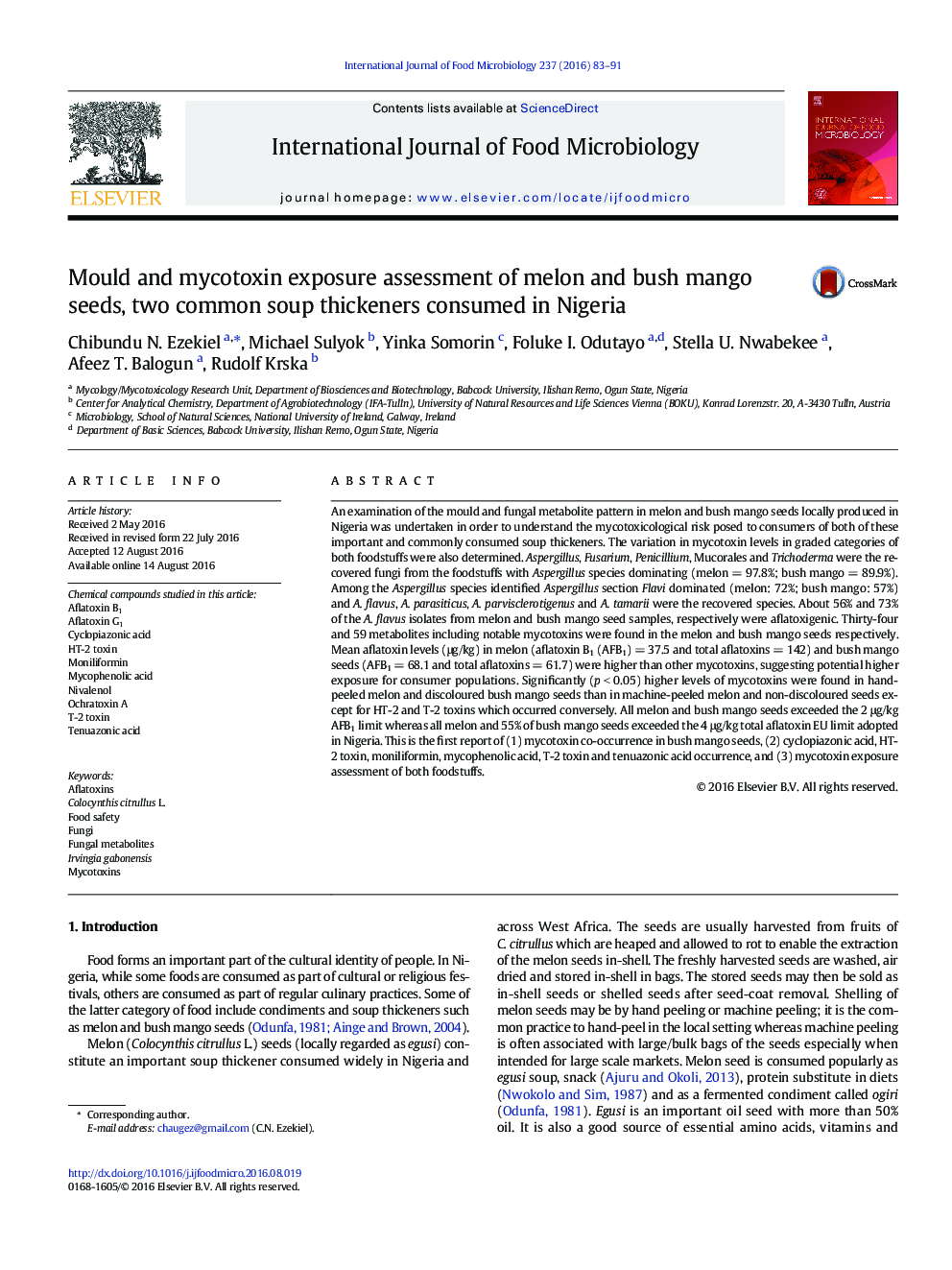| کد مقاله | کد نشریه | سال انتشار | مقاله انگلیسی | نسخه تمام متن |
|---|---|---|---|---|
| 6289722 | 1616546 | 2016 | 9 صفحه PDF | دانلود رایگان |
- Moulds including aflatoxigenic Aspergillus were found in melon and bush mango seeds.
- Mycotoxin and other microbial metabolites were found in both foodstuffs.
- All melon and more than 50% of bush mango seeds exceeded EU limits for aflatoxins.
- Machine-peeling of melon may lower mycotoxin exposure than hand-peeling.
- Physical separation of bush mango seeds lowers mycotoxin exposure.
An examination of the mould and fungal metabolite pattern in melon and bush mango seeds locally produced in Nigeria was undertaken in order to understand the mycotoxicological risk posed to consumers of both of these important and commonly consumed soup thickeners. The variation in mycotoxin levels in graded categories of both foodstuffs were also determined. Aspergillus, Fusarium, Penicillium, Mucorales and Trichoderma were the recovered fungi from the foodstuffs with Aspergillus species dominating (melon = 97.8%; bush mango = 89.9%). Among the Aspergillus species identified Aspergillus section Flavi dominated (melon: 72%; bush mango: 57%) and A. flavus, A. parasiticus, A. parvisclerotigenus and A. tamarii were the recovered species. About 56% and 73% of the A. flavus isolates from melon and bush mango seed samples, respectively were aflatoxigenic. Thirty-four and 59 metabolites including notable mycotoxins were found in the melon and bush mango seeds respectively. Mean aflatoxin levels (μg/kg) in melon (aflatoxin B1 (AFB1) = 37.5 and total aflatoxins = 142) and bush mango seeds (AFB1 = 68.1 and total aflatoxins = 61.7) were higher than other mycotoxins, suggesting potential higher exposure for consumer populations. Significantly (p < 0.05) higher levels of mycotoxins were found in hand-peeled melon and discoloured bush mango seeds than in machine-peeled melon and non-discoloured seeds except for HT-2 and T-2 toxins which occurred conversely. All melon and bush mango seeds exceeded the 2 μg/kg AFB1 limit whereas all melon and 55% of bush mango seeds exceeded the 4 μg/kg total aflatoxin EU limit adopted in Nigeria. This is the first report of (1) mycotoxin co-occurrence in bush mango seeds, (2) cyclopiazonic acid, HT-2 toxin, moniliformin, mycophenolic acid, T-2 toxin and tenuazonic acid occurrence, and (3) mycotoxin exposure assessment of both foodstuffs.
Journal: International Journal of Food Microbiology - Volume 237, 21 November 2016, Pages 83-91
